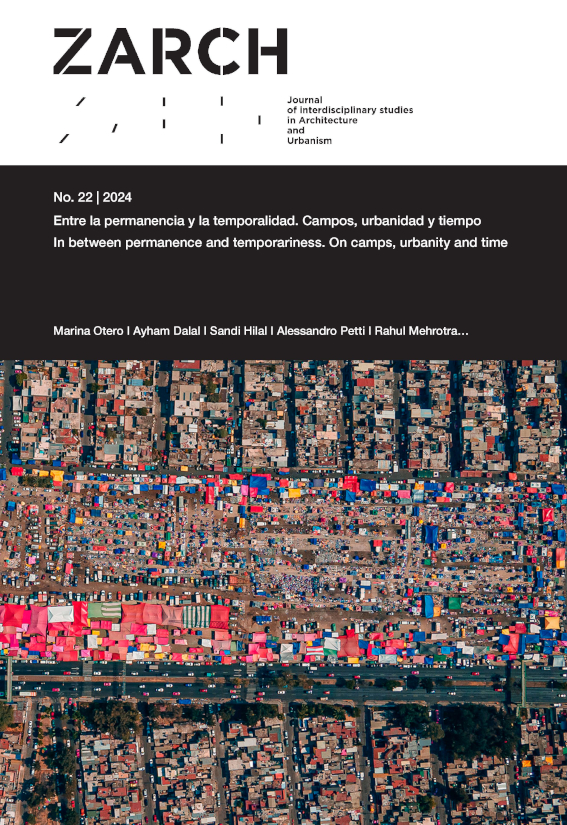Blocks of ice and stone. Time and matter in Michelangelo's work
DOI:
https://doi.org/10.26754/ojs_zarch/zarch.2024229868Keywords:
Michelangelo, non-finito, slaves, unfinished artwork, BBPR, Alvaro SizaAbstract
Through the ambiguous unfinished condition of certain of Michelangelo Buonarroti's works, this text explores his experiments with time and matter, taken as instruments of a conscious project. From an unknown ephemeral ice sculpture in the Palazzo Medici to his last work, the Rondanini Pietà, Michelangelo explores the limits of stone on a path that leads him from the perfection of polished marble to the abstraction of the rough block. A chronological record of his works reveals the infirmities of age, as if the sculptures were an extension of himself, from the adolescent face of the Vatican Pietà to the physical deformation of the series of Slaves in the tomb of Julius II. Centuries after his death, heritage dilemmas resound, such as the accommodation of the Rondanini in the Castello Sforzesco in Milan, which led to an initial project by the BBPR studio and a later relocation in which Álvaro Siza participated unsuccessfully, or the protection of the works of the Academy in Florence and the Pushkin Museum in Moscow during the Allied bombings of the Second World War by means of ephemeral systems that rescue the liminal condition of the works under construction. Through all these works, we continue to reflect from the present on the idea of the open work, which channels our architectural reflections on architecture, materiality and time.
Downloads
References
Argullol, Rafael. Espíritu, carne y mármol. El País, 30 de junio de 2012.
Colombari, Lucia, Appunti di Museologia: il caso della Pietà Rondanini. Milán: Educatt, 2014.
Dolfi, Anna, Non finito, opera interrotta e modernità. Florencia: Firenze University Press, 2015.
Espuelas, Fernando, Madre materia. Madrid: Lampreave, 2009.
Huber, Antonella, “Rinascimento magico Immagini rivissute del museo vivente”. La Rivista di Engramma (2018): 154.
Masi, Bartolomeo, Ricordanze di Bartolomeo Masi: calderaio fiorentino dal 1478 al 1526. Florencia: GC Sansoni, 1906.
Moceri, Sonja, “La Pietà Rondanini come paradigma della museografia contemporanea: da BBPR ad Alvaro Siza”. Archeologia del museo (2004): 138-149.
Ordine e Fondazione dell’Ordine degli Architetti, Pianificatori, Paesaggisti e Conservatori della Provincia di Milano. Pietà, traslocando. https://ordinearchitetti.mi.it/it/news/2014-05-22/pieta-traslocando (consultada el 1 de noviembre de 2023).
Rovetta, Alessandro, L'ultimo Michelangelo. Disegni e rime attorno alla Pietà Rondanini. Milán: Silvana, 2011.
Salsi, Claudio; Mori, Giovanna. Michelangelo. La “Pietà Rondanini” nell’Ospedale Spagnolo del Castello di Milano. Turín: Allemandi, 2021.
Simon, Donatella “Plasticità della Forma e tragicità della Vita: Georg Simmel e Michelangelo”. Sociologia: rivista quadrimestrale di science storiche e sociali (2010): 44.
Valtierra, Ana, “Las Pietàs Con Miguel Angel hasta el final”. Revista Adiós Cultural, (2013): 102.
Vasari, Giorgio, Miguel Angel Buonarroti, florentino. Barcelona: Acantilado, 2007.
Vasari, Giorgio, Las vidas: De los más excelentes arquitectos, pintores y escultor es italianos desde Cimabue a nuestros tiempos (Madrid: Cátedra, 2011).
Zubiri, Xavier, Espacio. Tiempo. Materia. Madrid: Alianza Editorial, 2008.





